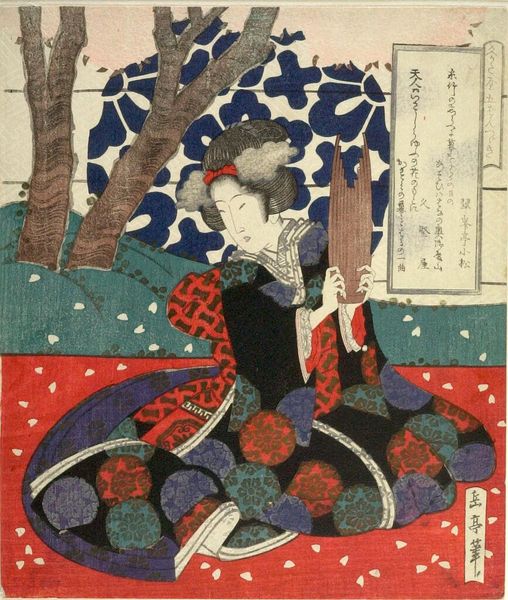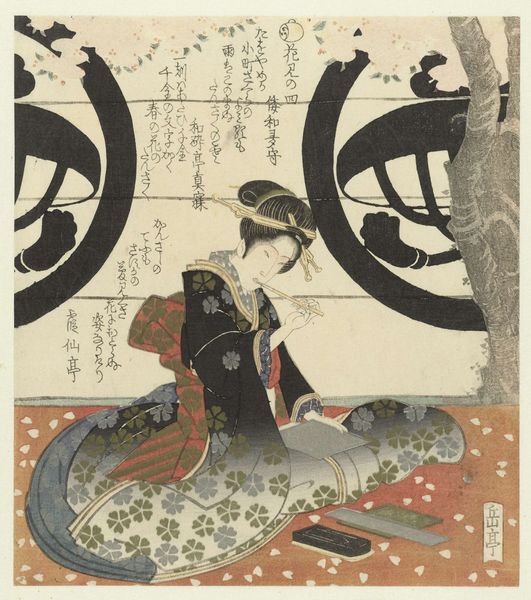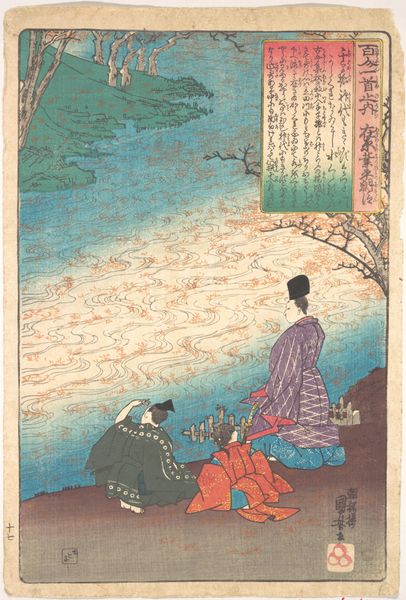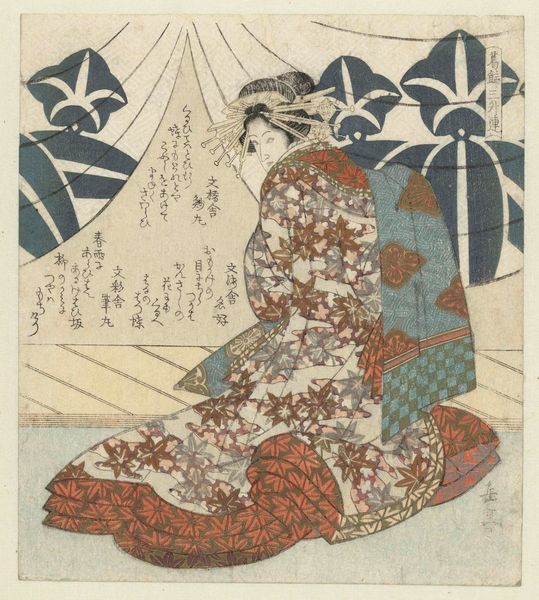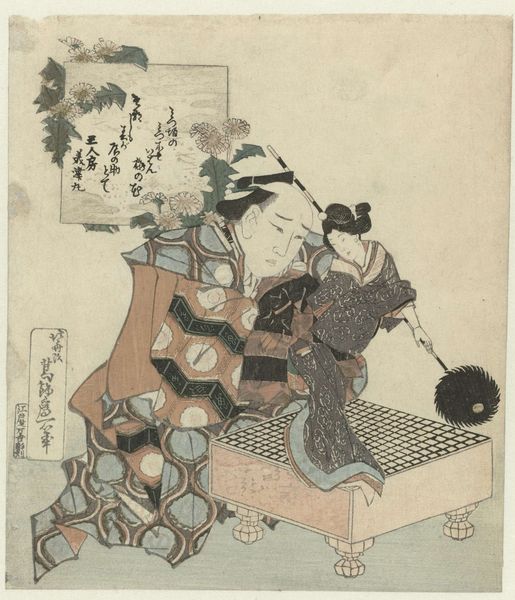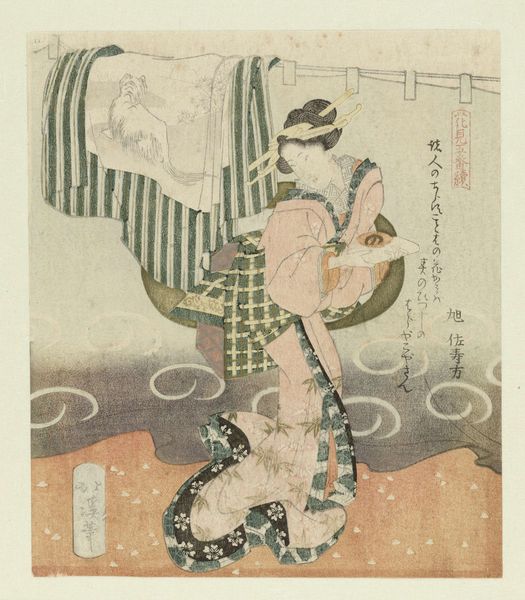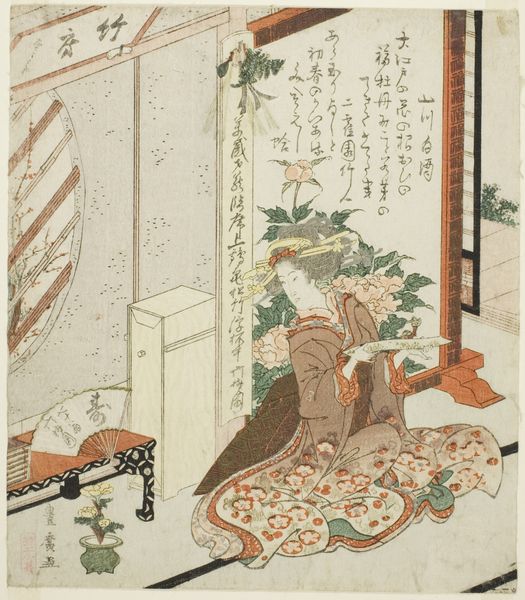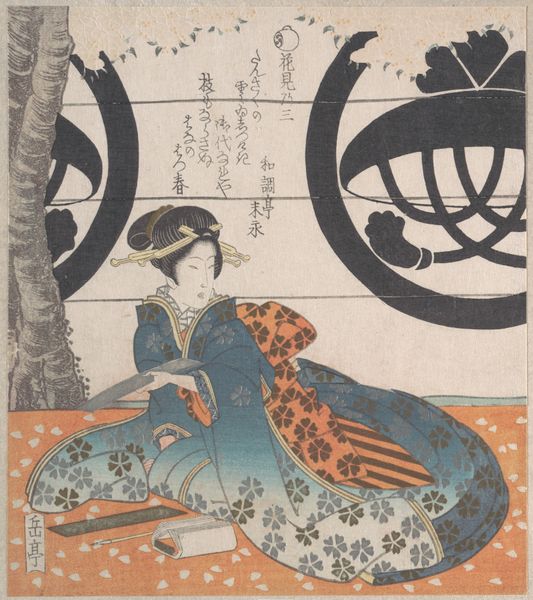
print, textile, woodblock-print
#
portrait
# print
#
asian-art
#
textile
#
ukiyo-e
#
woodblock-print
#
genre-painting
Dimensions: height 216 mm, width 184 mm
Copyright: Rijks Museum: Open Domain
Editor: So, we have before us Yashima Gakutei’s "Woman with koto on her lap", a woodblock print from around 1823, at the Rijksmuseum. I'm immediately struck by how tactile it feels, even from an image. The texture in her robe, that koto... It really emphasizes the materials. How do you interpret this work, considering its materials and historical context? Curator: It's crucial to see this print not just as a beautiful image, but as a product of its time. Woodblock printing was a complex, multi-layered process. What social class would have produced, bought, or owned the instruments depicted in this image? Who would perform with these? The layering of ink, the creation of the paper itself… Each element reflects specific labor practices and the availability of resources in Edo-period Japan. How do you think the mass production of these prints might have impacted the perception of “high art” at the time? Editor: That’s a great point. Ukiyo-e prints like this were relatively accessible, so maybe they challenged the traditional hierarchy of art by making it more available, sort of like a democratization of images. Considering that, how does that access influence the choices and means of production used to create pieces like this? Curator: Precisely! This is not just about aesthetics. Consider the pigments used – where did they come from, and how were they processed? Each step, from the cultivation of the materials to the final print, involves human labor and economic systems. By examining these material conditions, we gain a deeper understanding of the artwork's social life and how the print reflects consumption patterns. What do you think of how the textile's circles pattern relates to a more idealized depiction of domestic life for the figure pictured? Editor: It's fascinating to think about art in terms of materials and production rather than just artistic expression. It definitely sheds new light on how we understand art from this period. I guess that labor really changes how we look at everything. Curator: Exactly, it's a different lens. Thanks to thinking critically about production we can go beyond what an artwork shows to understand what it *is*.
Comments
No comments
Be the first to comment and join the conversation on the ultimate creative platform.

